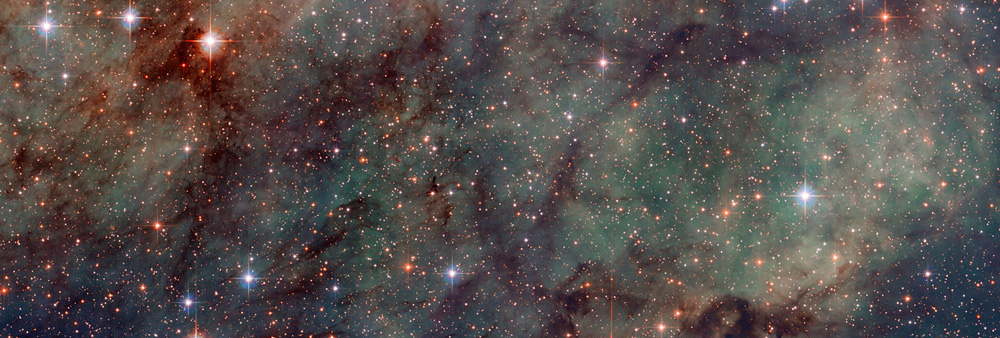<< Archive Menu | Main Menu | Search | Contact
The Cloud of Unknowing, 1998. Algorithmic pen & ink drawing. 11.5" by 14.5 ".
Revisiting "The Cloud of Unknowing"
Notes on a Universal Turing Machine (UTM) & the undecidable
Written in 1998 and revised January 2012, 2016
I hold a rather reverential view of the work of Alan Turing. He pioneered procedures that drew me to the frontiers of algorithmic form and the mysterious nature of undecidables. This mathematician’s adventure with undecidable propositions parallels, in some ways, the spiritual struggle with concepts of transcendent existence.
The logical procedure that we call a Universal Turing Machine (UTM) grew from Turing’s interest in Hilbert’s Entscheidungsproblem known as "the decision problem". By 1929 Gödel had shown that all formal systems are incomplete by their very nature so there will always be propositions that cannot be decided within any given formal system. By 1935 Turing was drawn deeply into working on a procedure for all decidable propositions. Such a procedure would be a universal algorithm for all decidables, in effect, all computable numbers. What, we might ask, drew Turing so deeply into the decision problem?
Let me diverge for a moment. Pondering the undecidable led me back to younger years when I first wrestled with the baffling limits of “reason”. Wonderment with my "questioning-self" led me to interior trips I took even as a child. Lying on my back looking up at the star studded sky on summer nights was one of my great childhood pleasures. I grew up far from the city in a coal patch in the foothills of the Allegheny mountains. There were no night lights or commercials buildings. On a cloudless night the hills would glisten under a full moon. On summer nights, I enjoyed lying in the grass on my back and gazing up, with wide eyed wonderment pondering the moon and the stars. The immensity of the skies led me to ponder the "infinity" they talked about in Sunday School.
Tarantula Nebula. Credit: NASA / ESA
Close-up shot of part of the Tarantula Nebula, a small galaxy neighbouring the milky way, taken by Hubble. In my memory, as a child, my view of the milky way back then would have been every bit as stunning as this NASA image of a neighboring galaxy may be for us today. Click here for larger image detailHow would it "be" to exist without beginning or ending? Thinking about this question made me strangely dizzy. Try as I might, I could never hold "forever and ever without end" in my head. Would this kind of existing be somehow outside of "now"? What would it be like to be in that kind of "now"? Somehow the idea of “now” didn’t fit into an “eternity”. And there were other unknowns. What if there had never been a “me”? And I would get dizzy lying there and pondering my “being there”. If I had never come to be then I would never have thought about any of this in the first place. So it would have been OK not to exist because then you would never have been here to know about anything anyway.
Perhaps a similar seduction teased Alan Turing in his adventure with numbers. If I understand correctly, his famous paper on computable numbers, outlining procedures for a universal algorithm, succeeds as a universal mime. The algorithm can mime any computable procedure. However, "undecidables" remain "undecidable" for a universal mime. This gets to be something like the "God" question - the "unknowable"; you cannot know “unknowables”! The decidability of the proposition remains “undecidable”.
Recently I had been reading The Cloud of Unknowing, which was written by an unknown spiritual master (probably an English monk) in the late 14th Century. The "Cloud of Unknowing" refers to the author's experience of what stood between himself and knowledge of the God he sought. I view his "Cloud of Unknowing" as the cloud between myself and understanding the mystery of self or anything that exists whatsoever. So the "Cloud of Unknowing" hovers over the meta-undecidable, the "Undecidable of undecidables", the mystery of our own being here!
A similar cloud hovers over a Universal Turing Machine.
On the one hand a UTM can assist us in deciding the decidable. It is the marvelous machine enabling my coded form-generators to draw visual forms with my drawing machines. If I do it right it helps me unveil new frontiers of form - delightful surprises and marvelous visual adventures. So, given well-formed procedures (code) and suitable hardware, it can help us monitor corporate inventories, fly an airplane, and locate my position on the earth.
But, alas, it cannot help us with the undecidable. So the "Cloud of Unknowing" hovers over a "UTM" just as surely as it hovers over all of us!
Roman Verostko. Minneapolis, February 1998 / revised 2012, 2016
Note: The original essay was written for a session at ISEA 98 in Manchester, UK. For that symposium I created a series of works as homage to Alan Turing whose work contributed to the development of computers. About 15 originals from this series, The Manchester Illuminated Universal Turing Machine, were shown at the Manchester Metropolitan University as part of the ISEA '98 exhibitions (December 1998). RV
See also my essay on "Illuminating a Universal Turing Machine"
* Turing’s paper "On computable numbers and the Entscheidungsproblem" : ..\..\turing\1936-paper.html

